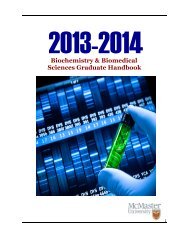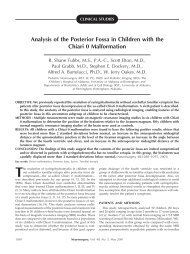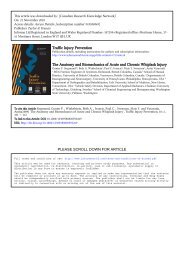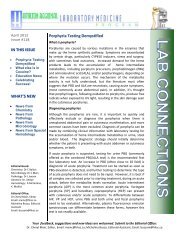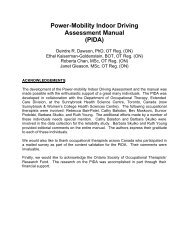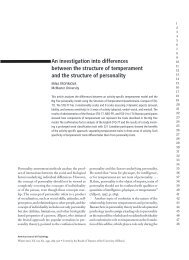Ketamine in Chronic Pain - McMaster University
Ketamine in Chronic Pain - McMaster University
Ketamine in Chronic Pain - McMaster University
You also want an ePaper? Increase the reach of your titles
YUMPU automatically turns print PDFs into web optimized ePapers that Google loves.
Peripheral <strong>Ketam<strong>in</strong>e</strong> Effects (2 mechanisms which could be responsible)<br />
1. <strong>Ketam<strong>in</strong>e</strong> and Peripheral NMDA antagonism<br />
BASIC STUDIES<br />
There is a role of peripheral excitatory am<strong>in</strong>o acids modulated by NMDA<br />
receptors <strong>in</strong> pa<strong>in</strong> and analgesia.<br />
Carlton SM. Peripheral excitatory am<strong>in</strong>o acids. Curr Op<strong>in</strong> Pharmacol 2001; 1:52-6).<br />
The analgesic effect of these drugs most likely occurs as a result of a blockade<br />
of NMDA receptors located on unmyel<strong>in</strong>ated axons <strong>in</strong> the sk<strong>in</strong>.<br />
Nociceptive behaviors observed follow<strong>in</strong>g <strong>in</strong>traplantar <strong>in</strong>jection of complete<br />
Freund’s adjuvant, capsaic<strong>in</strong> or formal<strong>in</strong> can be attenuated by local<br />
<strong>in</strong>traplantar <strong>in</strong>jection of MK-801. (Davidson 1998)<br />
Approximately 20% of the unmyel<strong>in</strong>ated cutaneous axons at the dermal–<br />
epidermal junction immunosta<strong>in</strong> for the NMDAR1 subunit of the NMDA<br />
receptor.<br />
(R.E. Coggeshall, S.M. Carlton, Ultrastructural analysis of NMDA, AMPA and ka<strong>in</strong>ate receptors on unmyel<strong>in</strong>ated and<br />
myel<strong>in</strong>ated axons <strong>in</strong> the periphery, J. Comp. Neurol. 764 1997. 126–132).<br />
The decrease <strong>in</strong> formal<strong>in</strong> <strong>in</strong>duced pa<strong>in</strong> by at least two mechanisms: A. reduce<br />
primary afferent activity which would ultimately reduce central sensitization of<br />
dorsal horn cells and, or, B. reduce the phase-2 <strong>in</strong>flammatory response.<br />
(J. Haley, A.F. Sullivan, A.H. Dickenson, Evidence for sp<strong>in</strong>al Nmethyl-D-aspartate receptor <strong>in</strong>volvement <strong>in</strong> prolonged chemical<br />
no-ciception <strong>in</strong> the rat, Bra<strong>in</strong> Res. 518 1990. 218–226).



